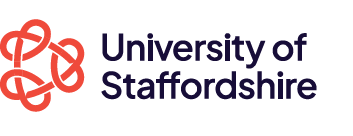Module Descriptors

PROFESSIONAL PRACTICE: CARTOON AND COMIC ARTS
COST50300
Key Facts
Digital, Technology, Innovation and Business
Level 5
15 credits
Contact
Leader: Lisa Wolfe
Email: L.A.Wolfe@staffs.ac.uk
Hours of Study
Scheduled Learning and Teaching Activities: 24
Independent Study Hours: 126
Total Learning Hours: 150
Assessment
- REPORT weighted at 100%
Module Details
ADDITIONAL ASSESSMENT DETAILS
REPORT [Learning Outcomes 1-3]
Your work will be clear and lucid. It will show evidence of substantiated independent thought and an awareness of different methodological approaches and theoretical applications.
Your work will be clear and lucid. It will show evidence of substantiated independent thought and an awareness of different methodological approaches and theoretical applications.
INDICATIVE CONTENT
This module is intended to explore the relationship between contemporary practice in the field of cartoons and comics and contemporary society. The main focus will be on a range of contemporary cartooning professionals and the theoretical underpinnings of their work. The module will consider the extent to which they have assimilated and synthesised various pieces of information and used stylistic, theoretical or practical art to make statements about events and situations.
LEARNING STRATEGIES
The module is based on a set of practical tutorials and short projects
1. Lectures: for the delivery of knowledge, theory, visual and historical background
2. Seminars: for the development of key conceptual and communications skills
3. Individual tutorials: for guidance with the assignment
4. Independent learning: to develop individual student research and information gathering techniques
1. Lectures: for the delivery of knowledge, theory, visual and historical background
2. Seminars: for the development of key conceptual and communications skills
3. Individual tutorials: for guidance with the assignment
4. Independent learning: to develop individual student research and information gathering techniques
TEXTS
Bensom, T, S. (2007) The Cartoon Century; Modern Britain through the Eyes of its Cartoonists. London:Random House
Bryant, M. (1989 1st Published; Republished 2005) World War 2 in Cartoons. London: Bounty Books
Gravett, P, & Stanbury, P. (2006) Great British Comics. Celebrating a Century of Ripping Yarns and Wizard Wheezes. London: Aurum
Mankoff, R. (2004) The Complete Cartoons of The New Yorker. New York: Black Dog & Leventhal
McQuiston, L. (1993) graphic Agitation. Social and Political graphics since the Sixties. New York: Phaidon
Riches, A. (2009) When the Comics Went To War. Edinburgh: Mainstream Publishing
Sabin, R. (2003) Comics, Comix & Graphic Novels. A History of Comic Arts. New York: Phaidon
Walker, B. (2004) Comics Before 1945. New York: Harry N. Abrams
Walker, B. (2002) Comics Since 1945. New York: Harry N. Abrams
A range of books, subject-specific periodicals and journals, newspaper and other related articles, as well as texts relating to the design process and the promotion of design relevant to your course of study should be employed as negotiated with the module manager - together with any subject-specific visual, audio or audio-visual evidence to support your work.
Recommended
You will be expected to take advantage of the extensive library facilities available within the University, keeping abreast of current developments through appropriate periodicals and being aware of the work of major practitioners in your subject.
Bryant, M. (1989 1st Published; Republished 2005) World War 2 in Cartoons. London: Bounty Books
Gravett, P, & Stanbury, P. (2006) Great British Comics. Celebrating a Century of Ripping Yarns and Wizard Wheezes. London: Aurum
Mankoff, R. (2004) The Complete Cartoons of The New Yorker. New York: Black Dog & Leventhal
McQuiston, L. (1993) graphic Agitation. Social and Political graphics since the Sixties. New York: Phaidon
Riches, A. (2009) When the Comics Went To War. Edinburgh: Mainstream Publishing
Sabin, R. (2003) Comics, Comix & Graphic Novels. A History of Comic Arts. New York: Phaidon
Walker, B. (2004) Comics Before 1945. New York: Harry N. Abrams
Walker, B. (2002) Comics Since 1945. New York: Harry N. Abrams
A range of books, subject-specific periodicals and journals, newspaper and other related articles, as well as texts relating to the design process and the promotion of design relevant to your course of study should be employed as negotiated with the module manager - together with any subject-specific visual, audio or audio-visual evidence to support your work.
Recommended
You will be expected to take advantage of the extensive library facilities available within the University, keeping abreast of current developments through appropriate periodicals and being aware of the work of major practitioners in your subject.
RESOURCES
Library
Internet access
Blackboard
Design archive
The Blackboard virtual learning environment will be available (where relevant) to support this module. Details will be supplied in the module handbook.
Internet access
Blackboard
Design archive
The Blackboard virtual learning environment will be available (where relevant) to support this module. Details will be supplied in the module handbook.
LEARNING OUTCOMES
1. AN UNDERSTANDING OF THE RELATIONSHIP BETWEEN COMIC ART THEORY AND PRACTICE. Analysis
2. AN ABILITY TO APPLY THIS AWARENESS TO A TOPIC FOR THE PURPOSE OF INDEPENDENT RESEARCH. Enquiry
3. THE ABILITY TO APPLY A RANGE OF RESEARCH METHODS AND PRIMARY AND SECONDARY SOURCES IN THE PRODUCTION OF AN ASSIGMENT.
Communication
Visual Analysis
2. AN ABILITY TO APPLY THIS AWARENESS TO A TOPIC FOR THE PURPOSE OF INDEPENDENT RESEARCH. Enquiry
3. THE ABILITY TO APPLY A RANGE OF RESEARCH METHODS AND PRIMARY AND SECONDARY SOURCES IN THE PRODUCTION OF AN ASSIGMENT.
Communication
Visual Analysis